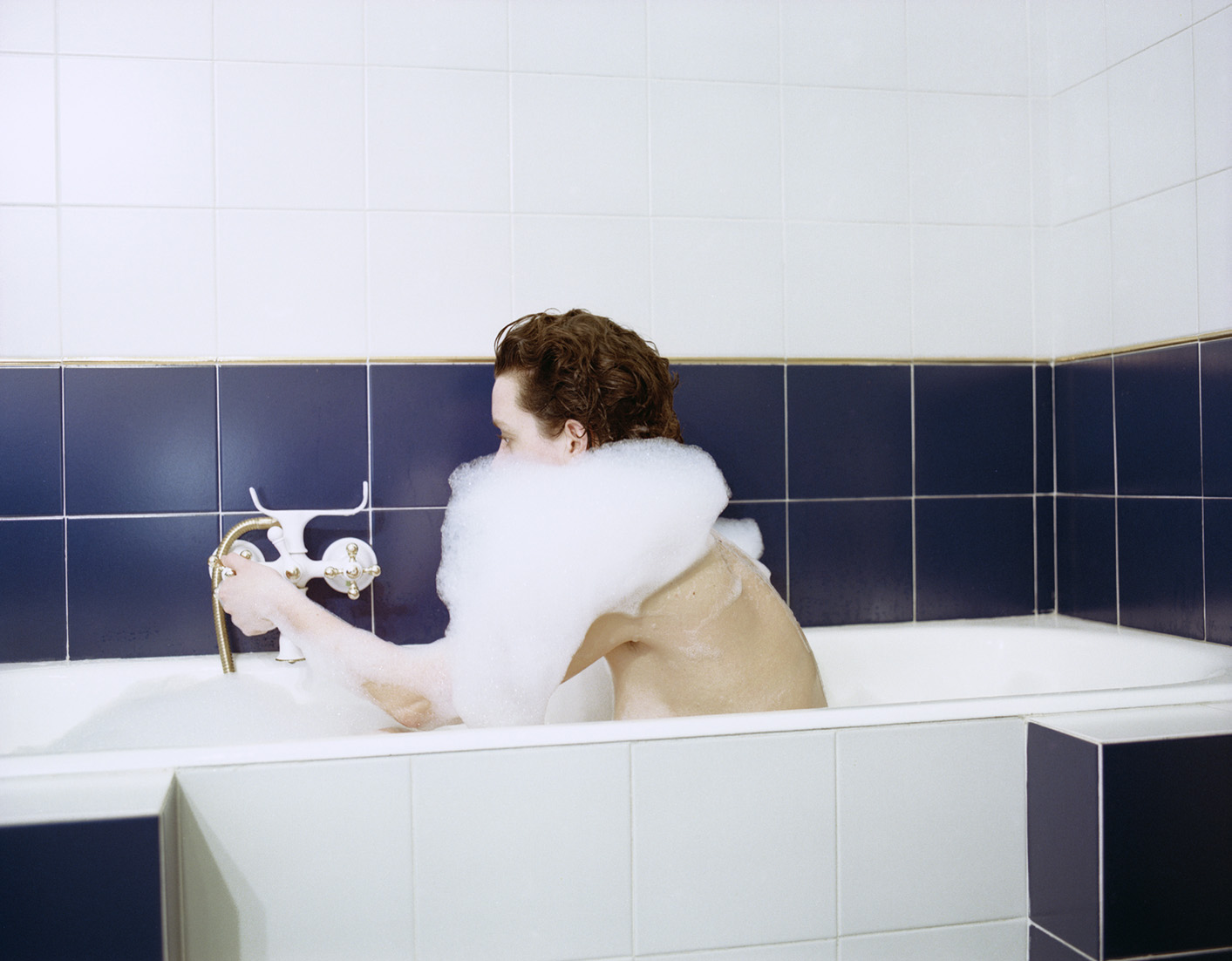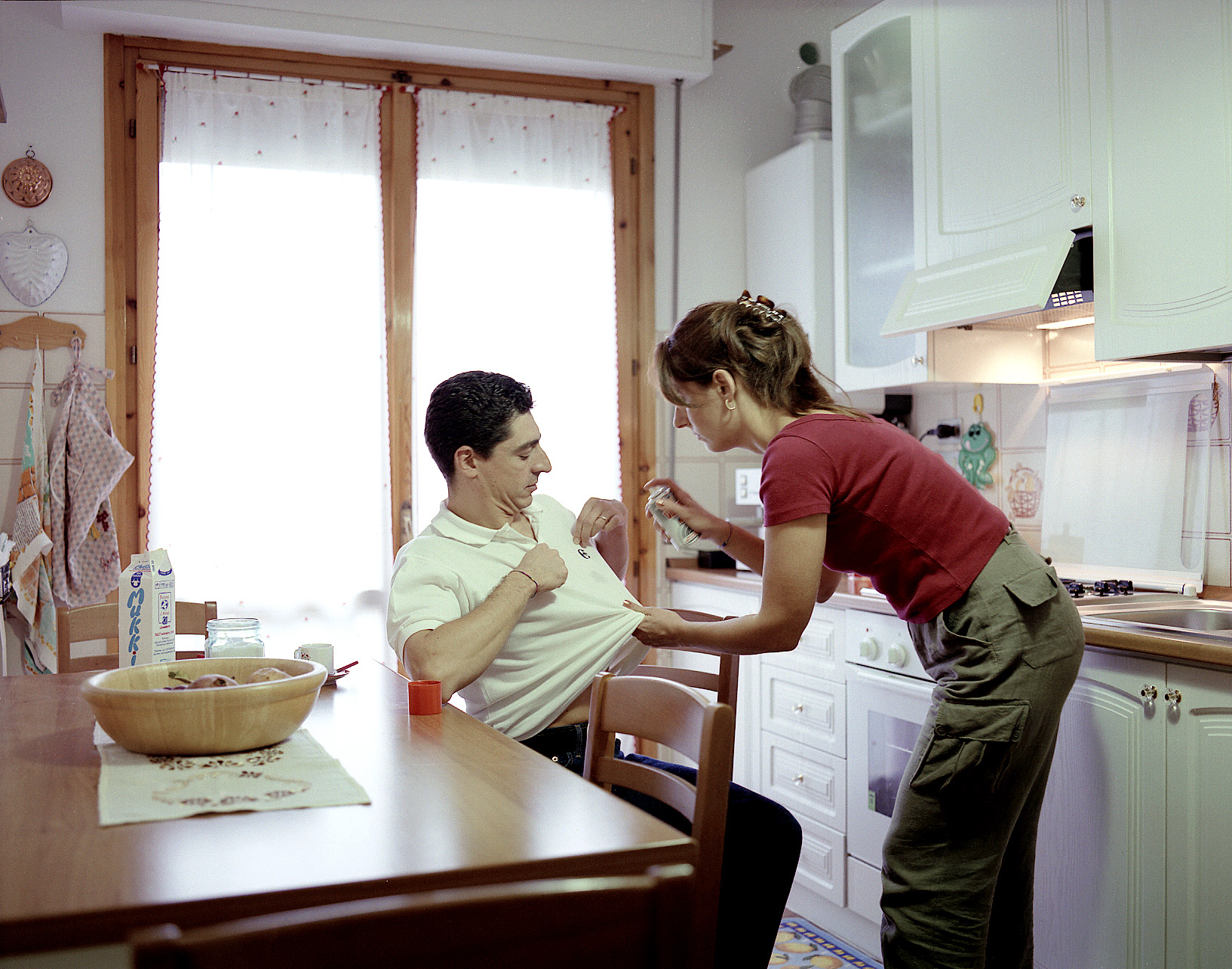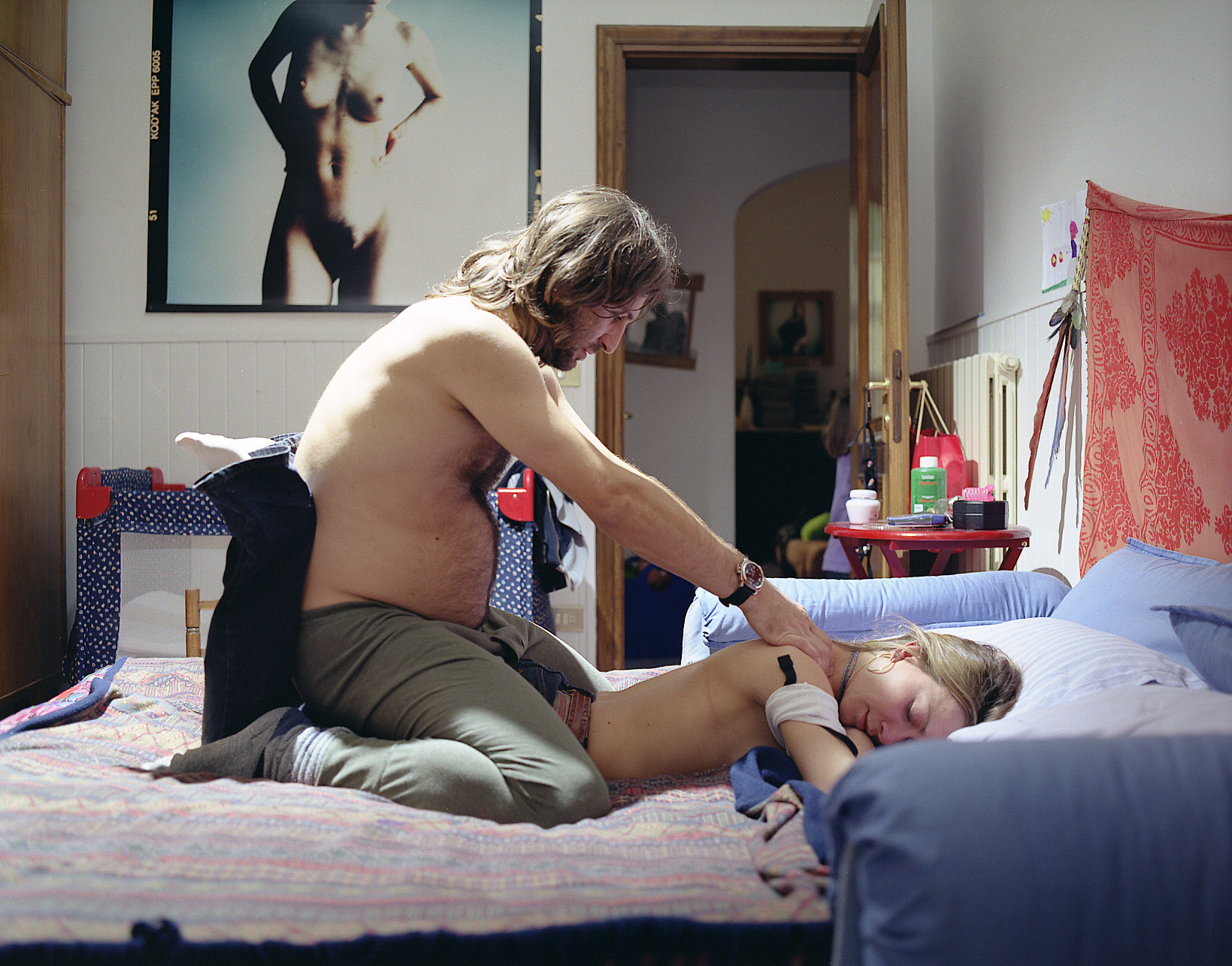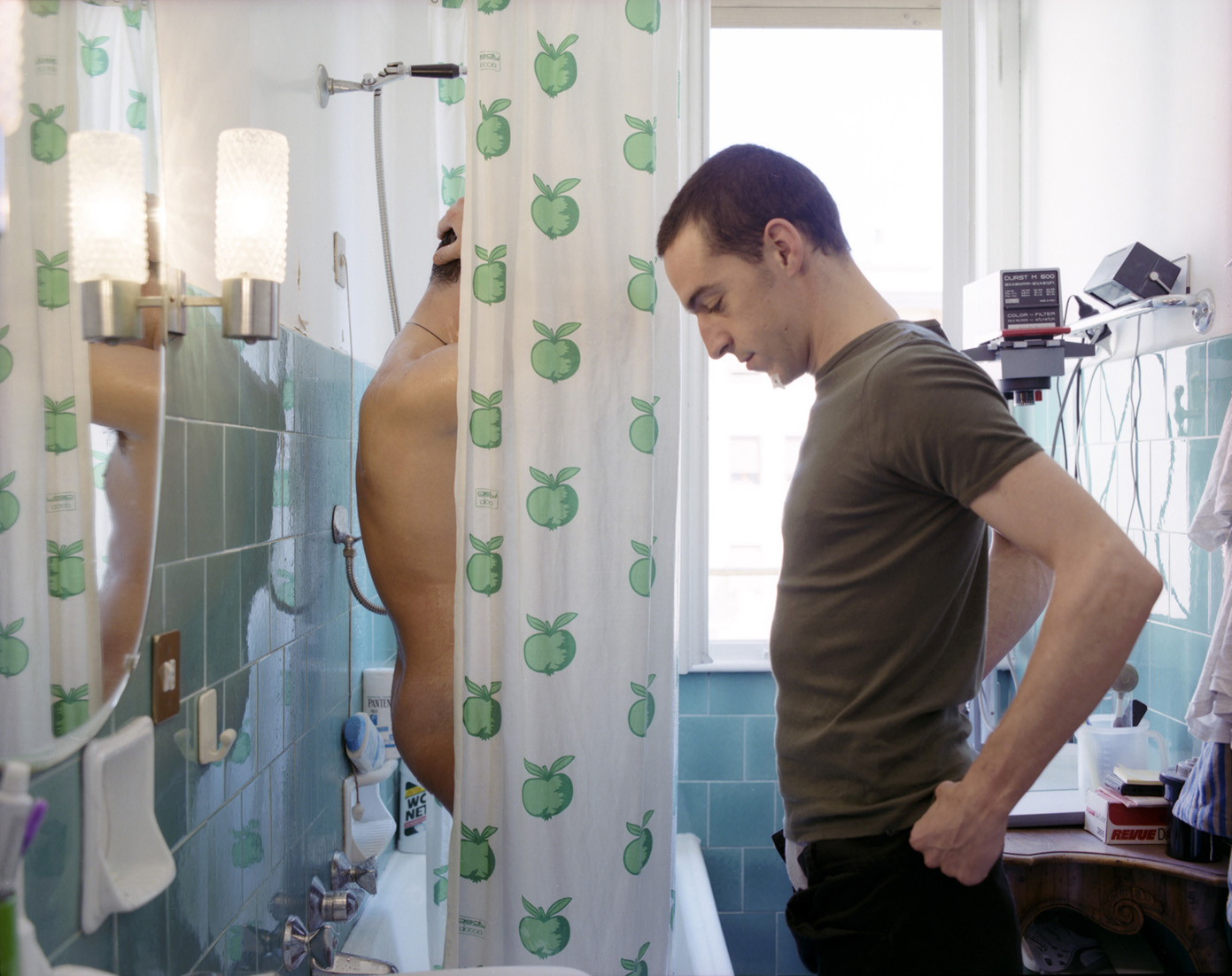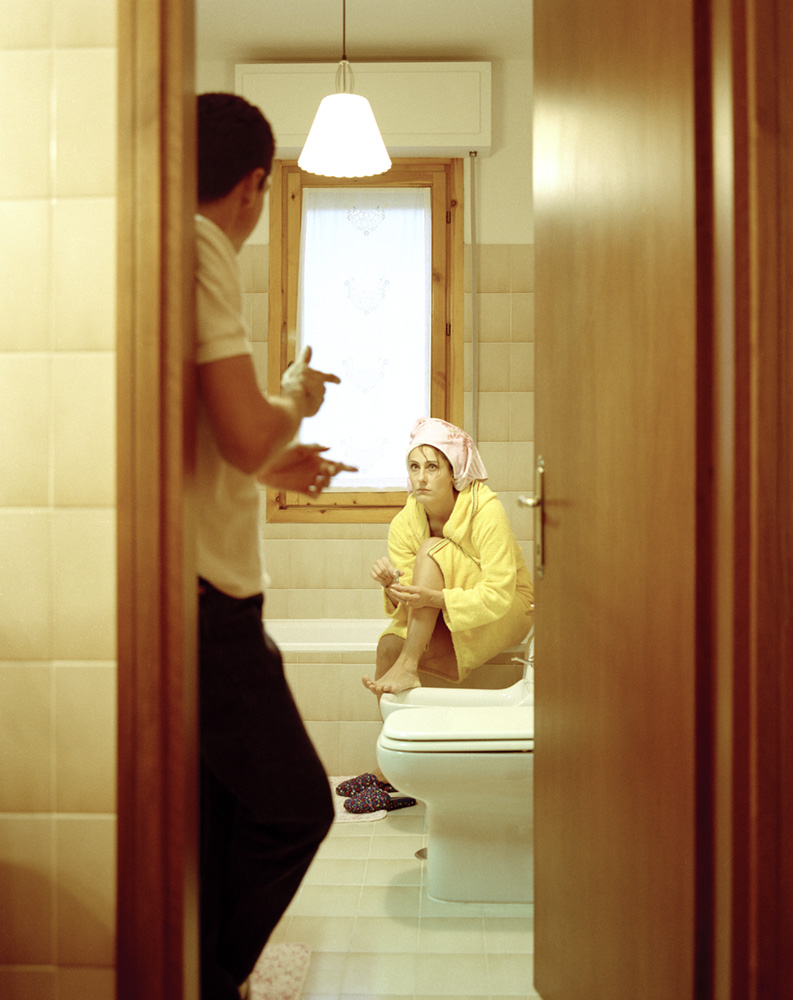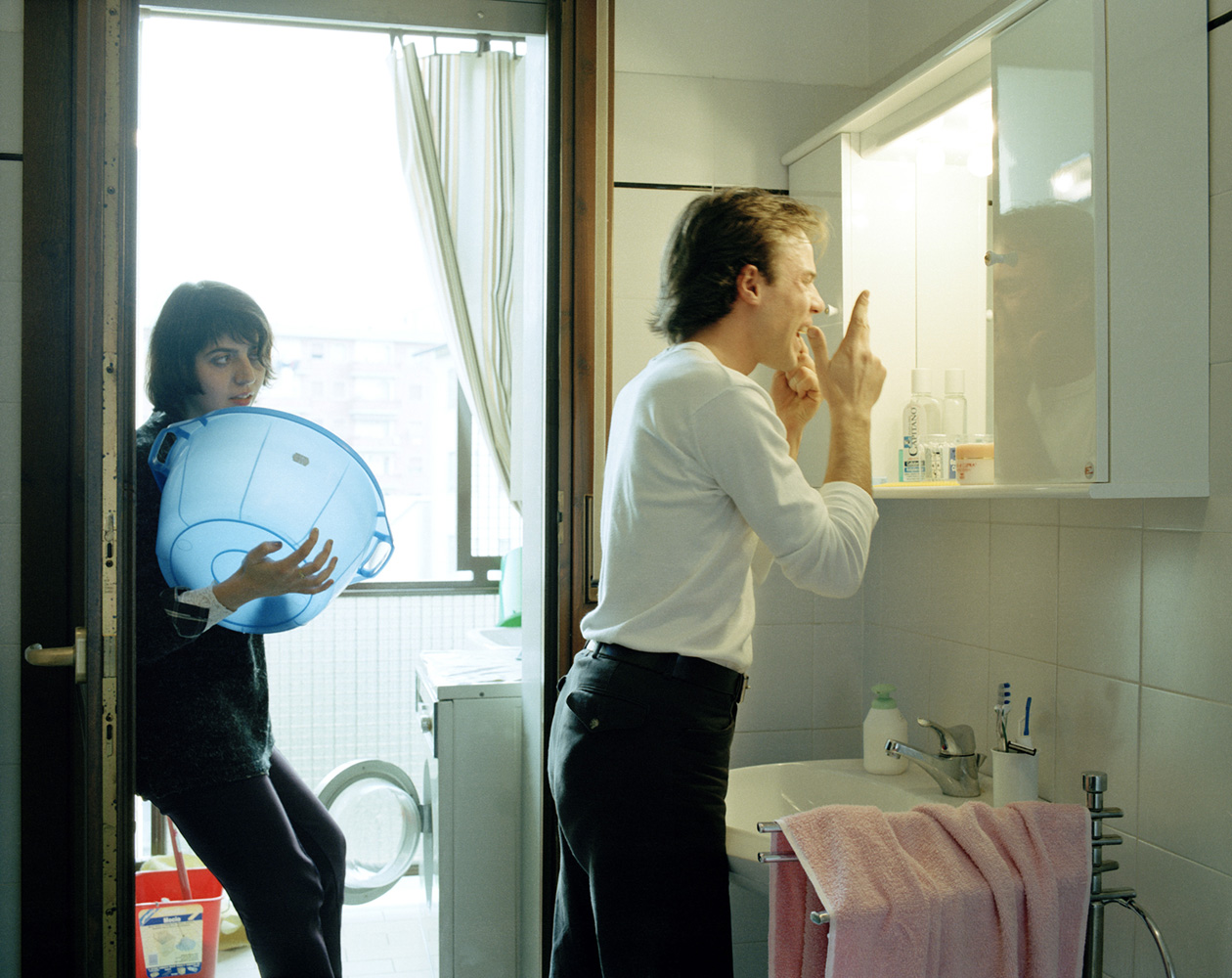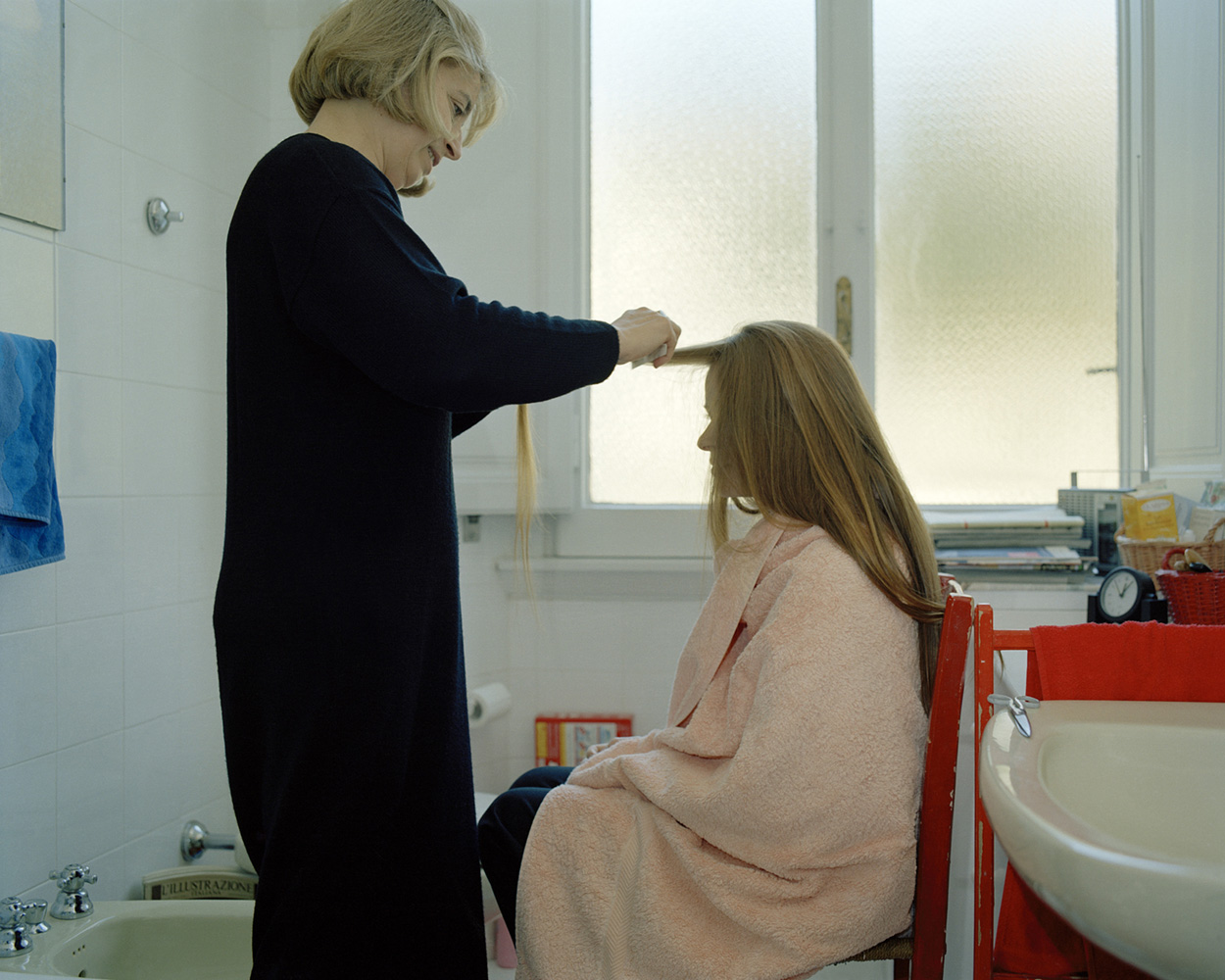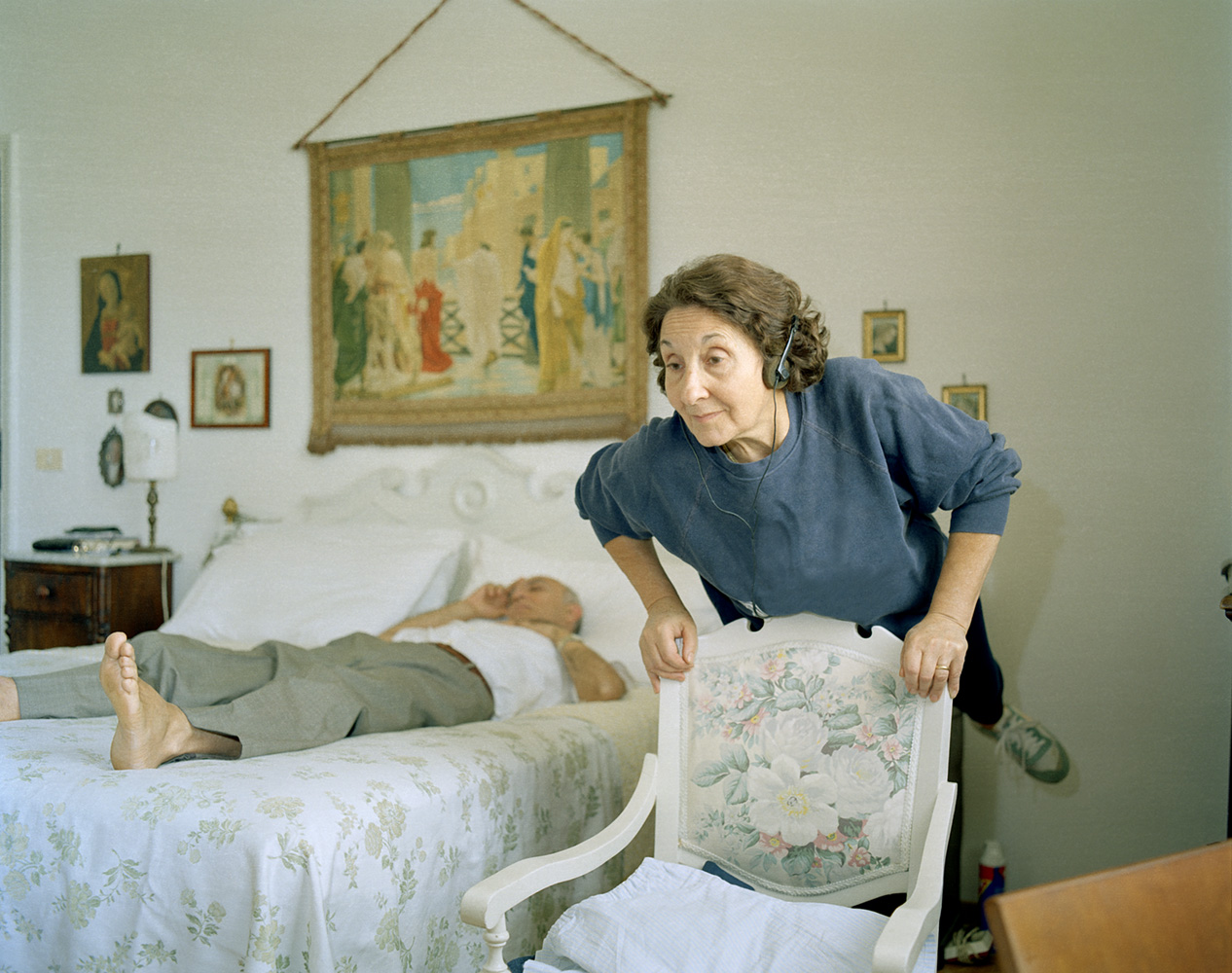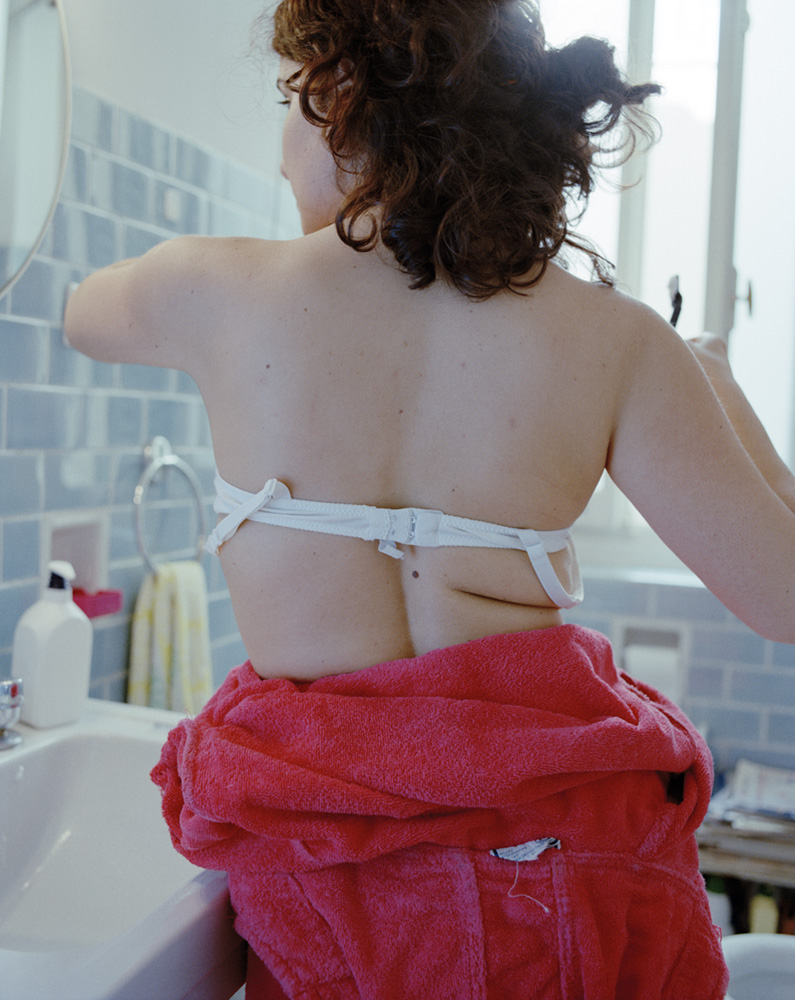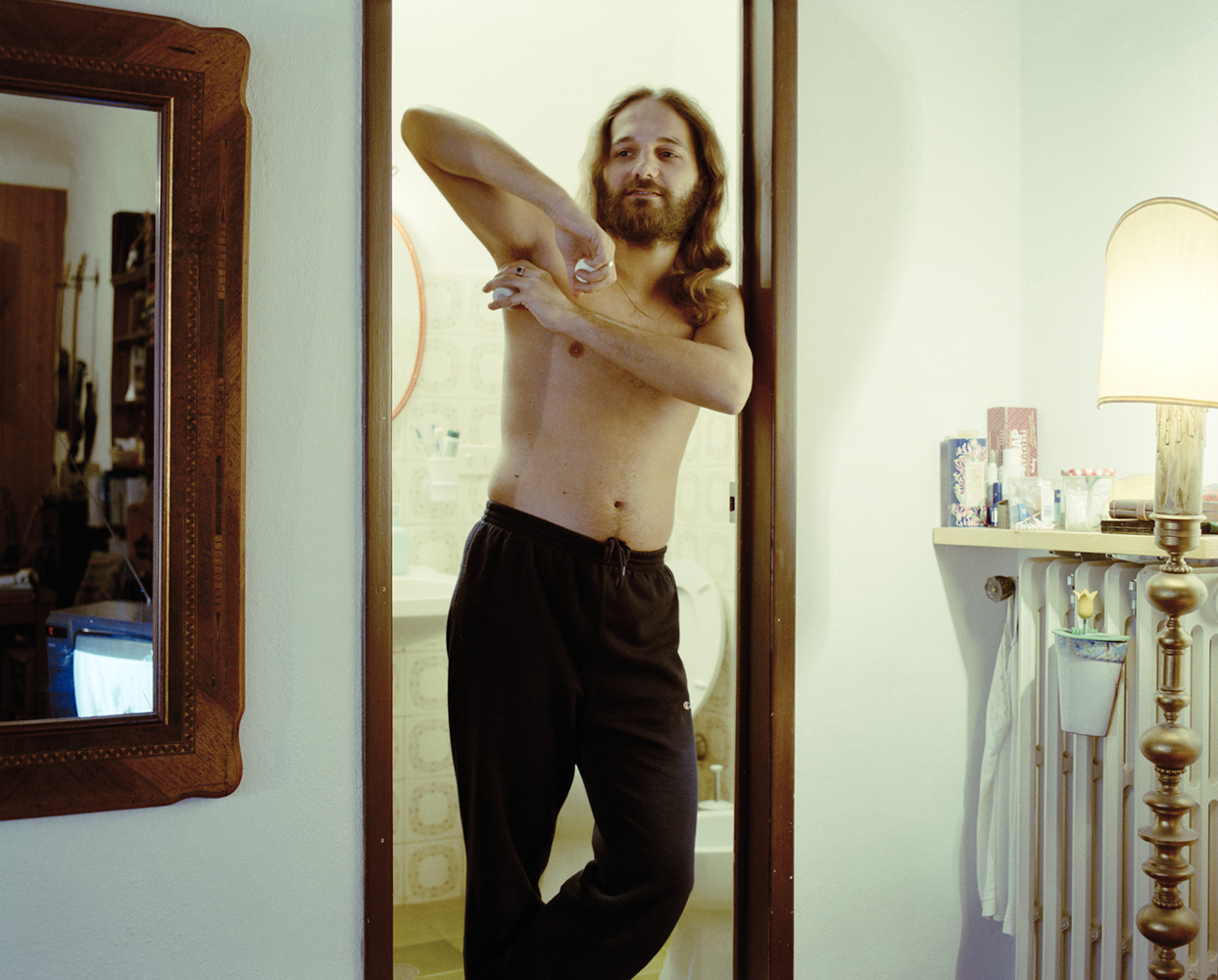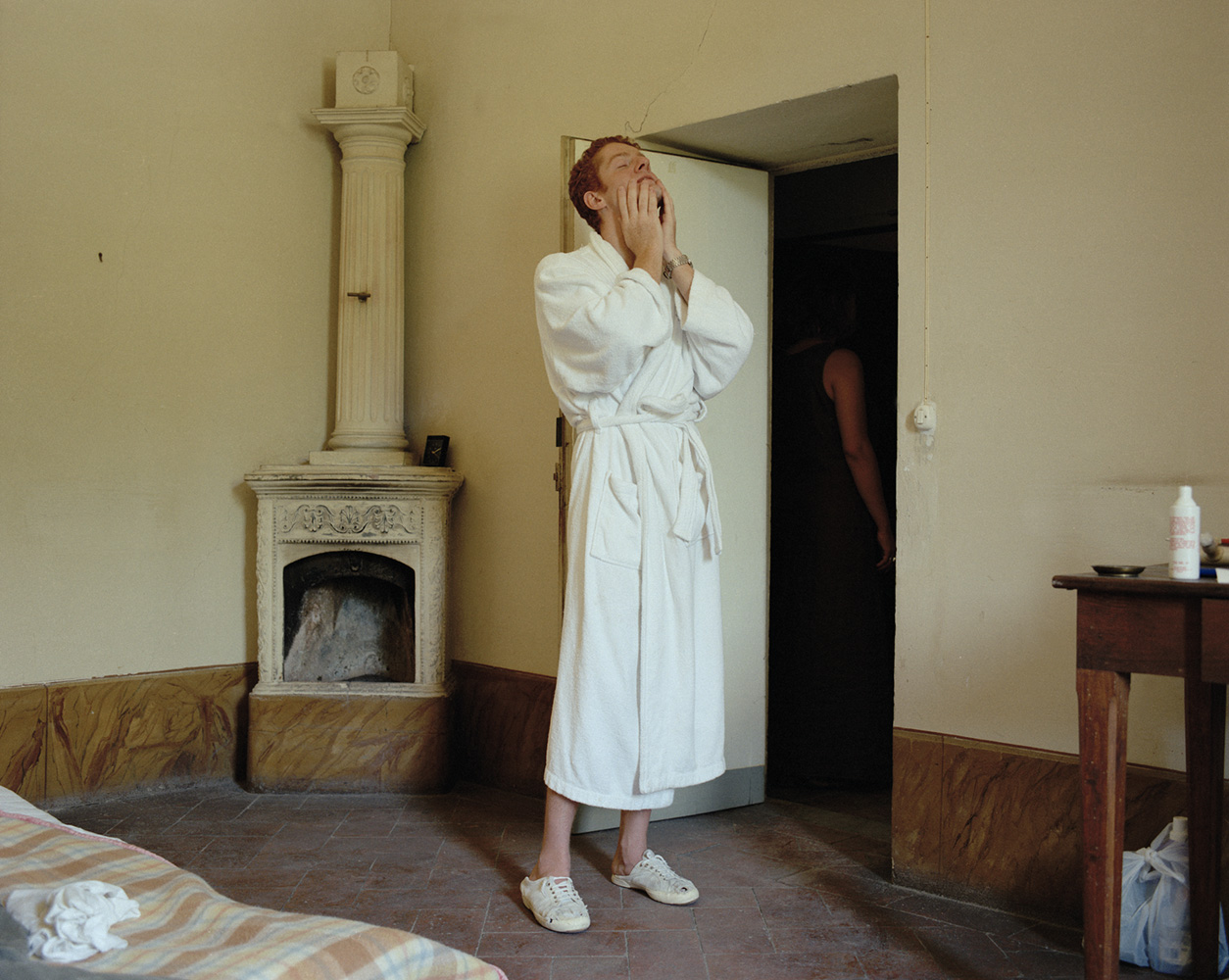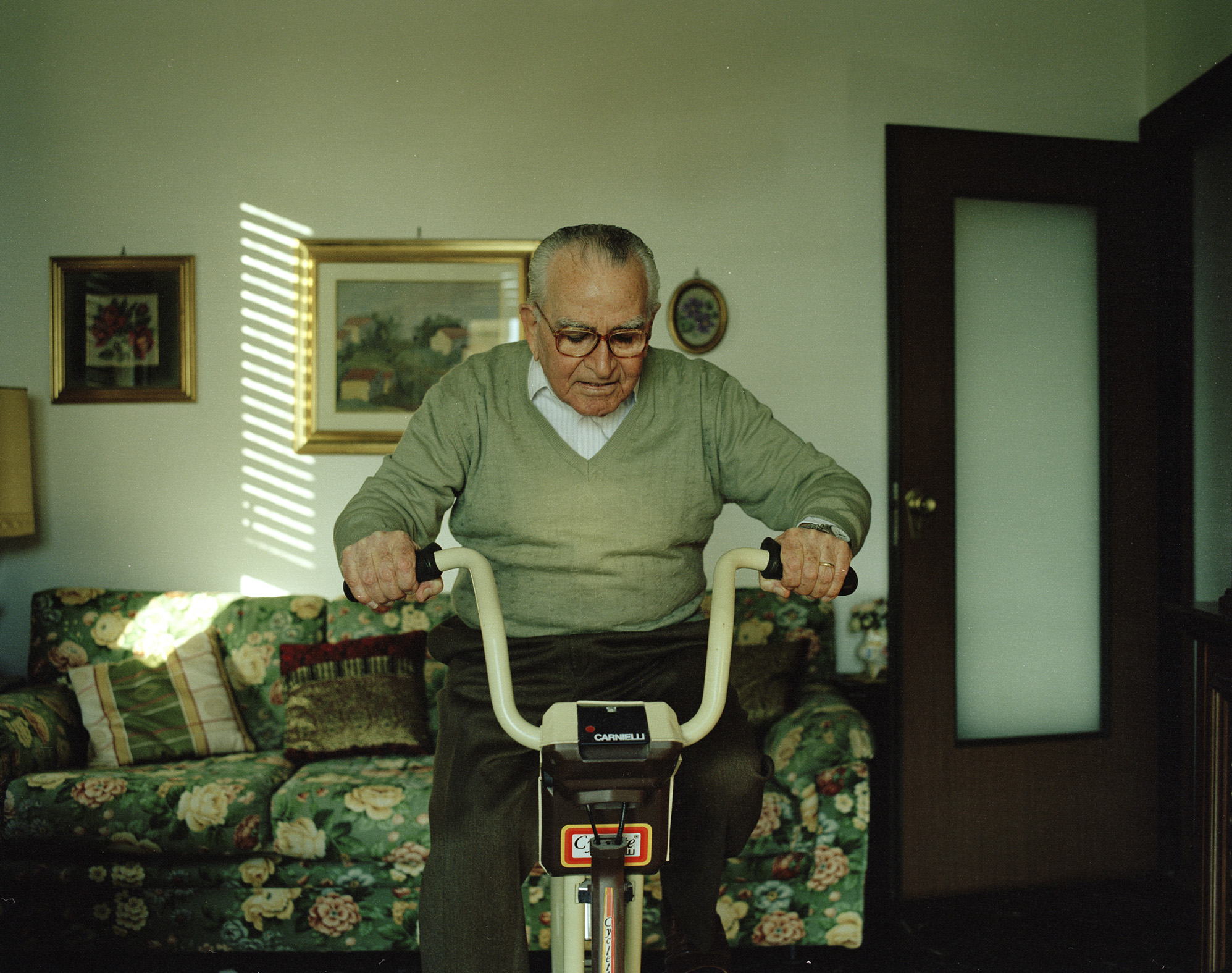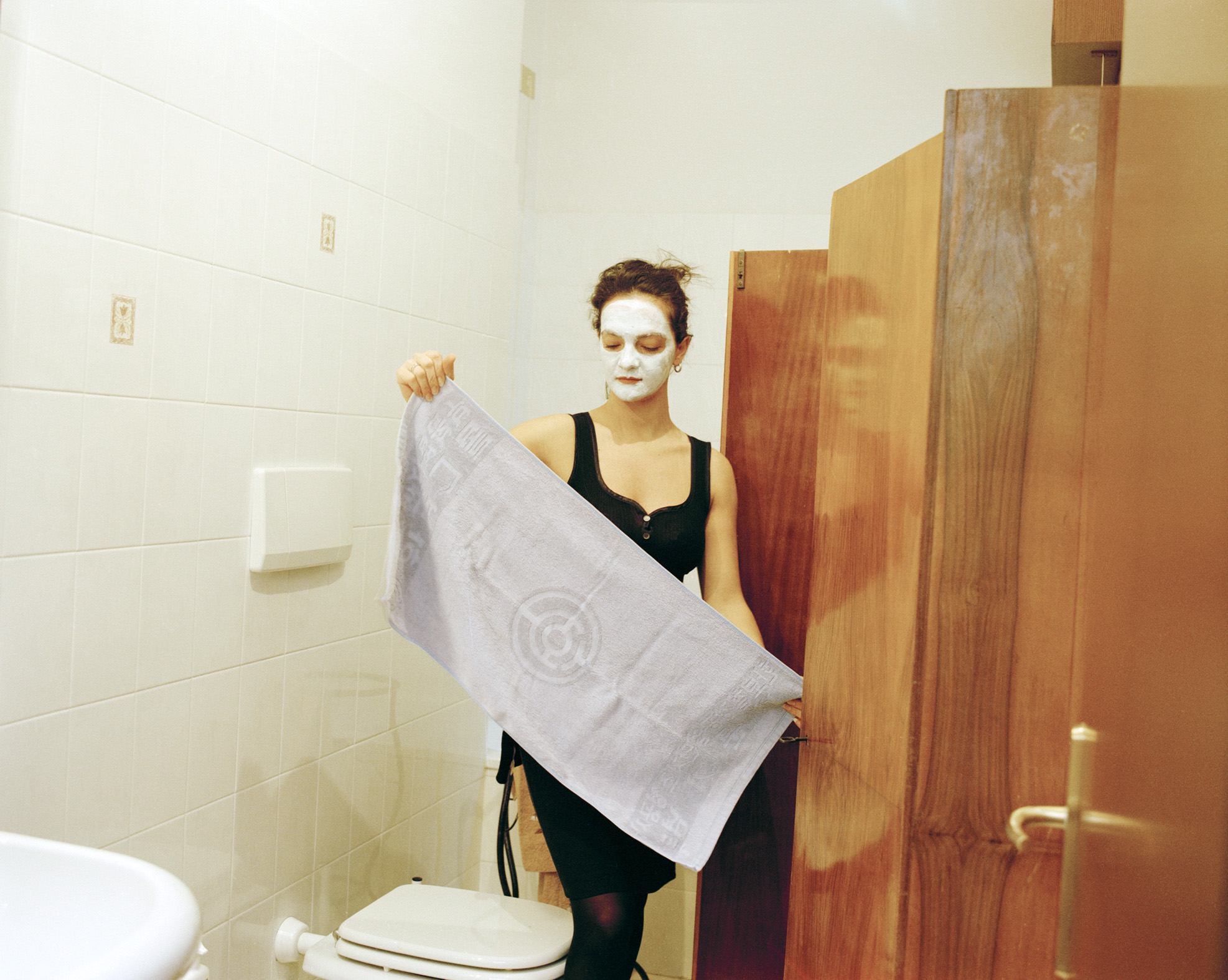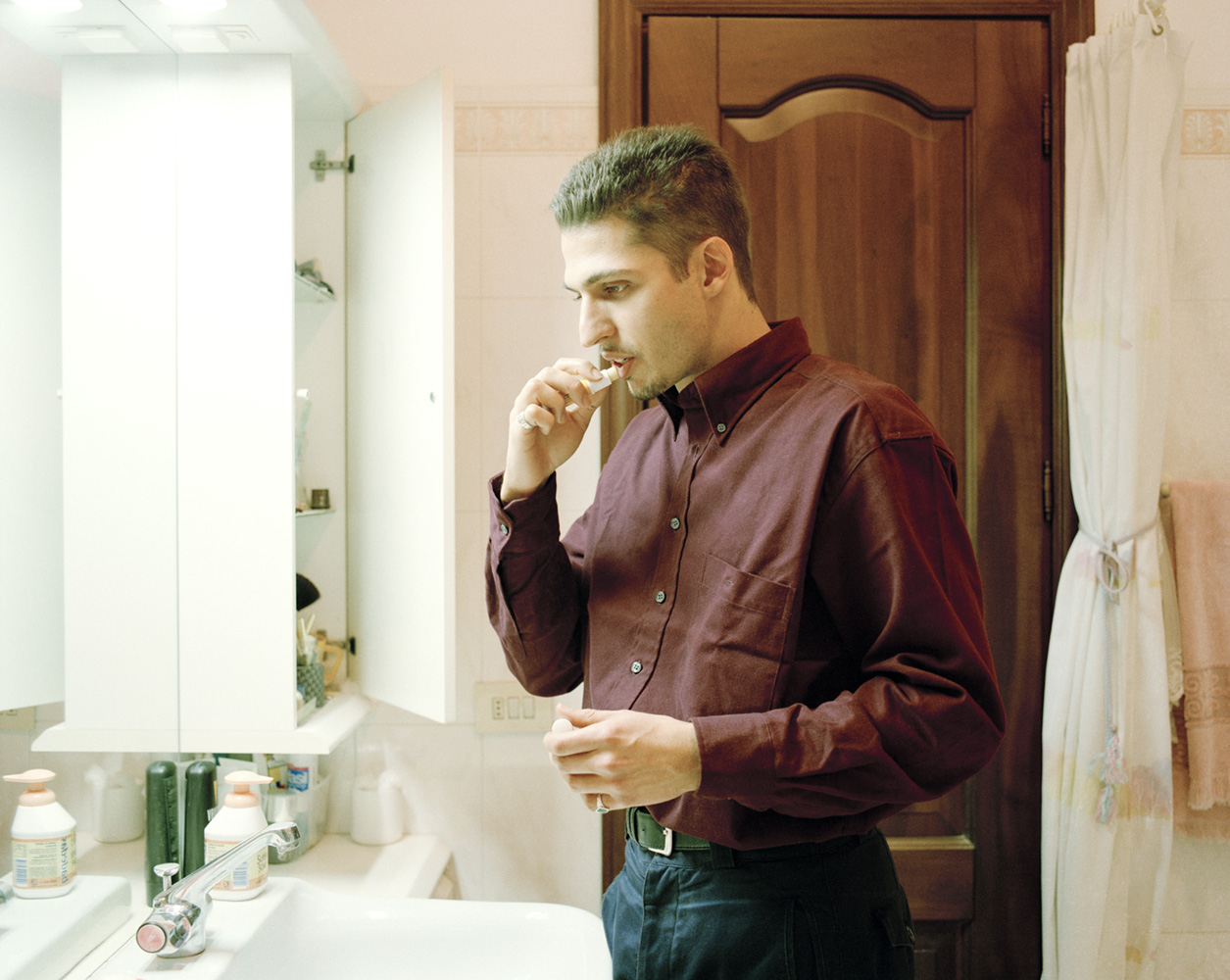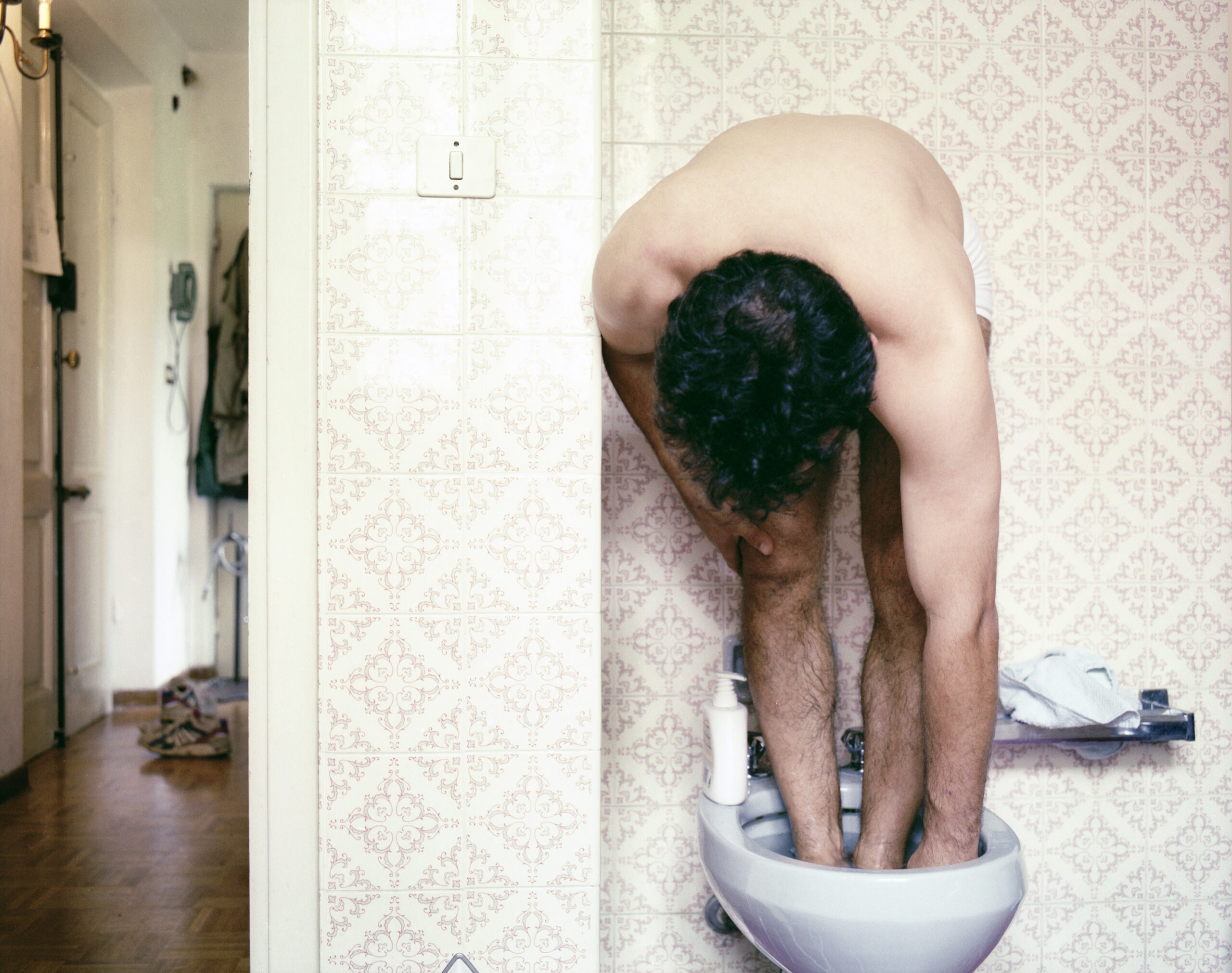
According to a sociological principle, human evolution is based on identification and differentiation, as if “each individual felt its meaning only in opposition to others, to the point that this opposition is artificially created even where it does not exist”. Consciously or unconsciously the individual, guided by a series of rules that are imposed from the outside, puts in place, every time he is about to intervene on his own body, emulative operations of a model deemed suitable for his person.
Secondo un principio sociologico l’evoluzione umana si basa sull’identificazione e la differenziazione, come “se ogni singolo sentisse il suo significato solo in contrapposizione ad altri, al punto tale che questa contrapposizione è creata artificiosamente anche laddove non c’è”. Consciamente o inconsciamente l’individuo, guidato da una serie di norme che vengono imposte dall’esterno, pone in essere, ogni volta che si accinge ad intervenire sul proprio corpo operazioni emulative di un modello ritenuto adatto alla propria persona.
Since around 1996 Giorgio Barrera’s work is focused on the changes of contemporary society and, more specifically, o the Italian middle class.
The photographer primary subject is people engaged in the daily rituals of domestic life. What interests him most is the individual as a subject who acts and is acted upon at the same time, that is, a being whose personality and history are also, at a certain extent, determined. For this reason Barrera’s colour images are situated along the line of demarcation between spontaneity and construction, between the documentary shot, resulting from the photographer’s purely receptive powers of observation, and the subtle chill of the theatrical obtained through his direct orchestration of the setting.
“Instructions for Use” is dedicated to the intimate ritual of bathing and the typically modern and bourgeois (but also post-modern and post-bourgeois) behavior modes that Barrera himself describes as “induced by advertising and aimed at esthetics and the representation of the self that the individual adopts in order to “meet” the outside world.” The contradiction between the unique and organic intimacy of a body, and the standardized, serialized instructions for use that come with products on the market (be they cosmetic, technological, medical etc.) dictating the times and rules for care rituals, is the essence of this work.
Nicoletta Leonardi, Quaderni AFT n. 5. Nov. 2000
Dal 1996 circa, la ricerca di Giorgio Barrera è incentrata sui mutamenti della società contemporanea e, in particolare, sull’analisi della classe media italiana. Il lavoro del fotografo ha come soggetto principale la rappresentazione di persone colte nella quotidianità rituale della vita domestica. Ciò che interessa Barrera è l’individuo come soggetto agente e agito al tempo stesso, ovvero dotato di personalità e storia proprie ma anche, in qualche misura, indotte. Per questo, le immagini a colori di Barrera si collocano sulla linea di demarcazione fra la spontaneità e la costruzione, fra lo scatto di documentazione, frutto della pura capacità di osservazione del fotografo, e il sottile raffreddamento nella finzione teatrale ottenuto tramite la regia diretta operata dal fotografo stesso sulla scena.
Ai riti di pulizia del corpo consumati in privato, e ai comportamenti, tipicamente moderni e borghesi (ma anche post-moderni e post-borghesi), che lo stesso Barrera descrive come “indotti dalla pubblicità e mirati all’estetica e alla rappresentazione del proprio sé, che l’individuo pone in essere per poter ‘affrontare’ il mondo esterno”, è dedicato Modo d’impiego (1999).
Nel lavoro è inscritta la contraddizione fra l’intimità organica, unica e irripetibile, di un corpo, e le istruzioni per l’uso, seriali e omologhe, che accompagnano i prodotti in commercio (siano essi estetici, medici, tecnologici, ecc.), dettando tempi e regole dei rituali di igiene. Barrera rappresenta il conflitto fra i comportamenti normativi e standardizzati imposti dalle regole sociali e la sfera intima e privata della domesticità, conflitto che l’individuo si trova ad affrontare nel tentativo di rappresentare e narrare il sé.
Nicoletta Leonardi, Quaderni AFT n. 5. Nov. 2000
MODO DI IMPIEGO
Probabilmente l’immagine più forte e matura del contesto sociale contemporaneo è quella che si immette e introduce nelle nostre azioni tramite la pubblicità. L’immagine pubblicitaria è la veste essenziale del nostro esporci, crea modelli da emulare, impone mode.
Sono partito da questa considerazione quando ho iniziato questo lavoro e mi sono diretto verso quelli che sono i comportamenti mirati all’estetica, alla cura e alla rappresentazione del proprio sé che l’individuo pone in essere per poter “affrontare” il mondo esterno. Storicamente il rapporto con l’igiene e la persona subisce, nella relativamente recente storia europea, due mutamenti epocali: uno nel quattordicesimo secolo quando la peste provoca un imponente e clamoroso allentamento di certe norme igieniche collegate alla cura del corpo e l’altro nel diciottesimo secolo quando, invertendo la tendenza dei secoli inframezzo, la popolazione riscopre l’acqua e quelli che, semplicisticamente, si possono definire come i riti di pulizia.
INSTRUCTIONS FOR USE
Probably the strongest and most mature image of the contemporary social context is the one that is inserted and introduced into our actions through advertising. The advertising image is the essential role of our exhibit, it creates models to emulate, imposes fashions.
I started from this consideration when I started this work and I headed towards what are the behaviors aimed at aesthetics, at the care and at the representation of one’s self that the individual puts in place in order to “face” the external world. Historically, the relationship with hygiene and the person undergoes, in relatively recent European history, two epochal changes: one in the fourteenth century when the plague causes an impressive and sensational loosening of certain hygiene rules connected to body care and the other in the eighteenth century. century when, reversing the trend of the intervening centuries, the population rediscovers water and what, simplistically, can be defined as cleaning rituals.
Una delle cause della nuova “ondata di necessità di pulizia” databile nella seconda metà dell’ottocento si ricollega al momento in cui l’architettura privata (borghese) rivolge la sua attenzione alla “specializzazione” degli ambienti delle abitazioni. Mutando la disposizione delle stanze e rendendole da intercomunicanti a indipendenti, si delimitano e separano gli spazi, creando così i “ luoghi dell’intimità. Questa scoperta, perché è lecito così chiamarla, ha in effetti una portata clamorosa sui costumi del nostro e del secolo passato. Nel luogo intimo la persona riscopre il corpo secondo una diversa percezione: nella nudità, nella sua capacità seduttiva.
Non è nemmeno un caso che all’inizio di questo “rinascimento” della pulizia e dell’igiene molti pittori tra i quali Bonnard, Degas e Manet ritraggono e rappresentano, testimoniandolo, il cambiamento della predisposizione dell’individuo verso la cura del corpo.
Il ritorno all’interesse per l’igiene personale è stato spesso ostacolato nei secoli dalla morale cristiana “dalla preoccupazione di evitare mollezze, compiacimenti, autocontemplazione” e talvolta dalla medicina ma, aldilà di queste considerazioni, ai nostri giorni il benessere, la ricerca medica, la tecnologia, la produzione estetica, la vita metropolitana, sono stati gli ingredienti primari del rinnovato interesse che l’individuo contemporaneo riversa non tanto nell’igiene quanto nella ricerca estetica. La motivazione di questo cambiamento è, probabilmente, da ricondursi nella trasposizione di una moda, intesa qui nel significato più ampio di questo termine.
Secondo un principio sociologico l’evoluzione umana si basa sull’identificazione e la differenziazione, come “se ogni singolo sentisse il suo significato solo in contrapposizione ad altri, al punto tale che questa contrapposizione è creata artificiosamente anche laddove non c’è”. Consciamente o inconsciamente l’individuo, guidato da una serie di norme che vengono imposte dall’esterno, pone in essere, ogni volta che si accinge ad intervenire sul proprio corpo operazioni emulative di un modello ritenuto adatto alla propria persona.
One of the causes of the new “wave of need for cleaning” dating back to the second half of the nineteenth century is linked to the moment in which private (bourgeois) architecture turns its attention to the “specialization” of the environments of the houses. By changing the layout of the rooms and making them from intercommunicating to independent, the spaces are delimited and separated, thus creating “places of intimacy. This discovery, because it is legitimate to call it so, has in fact a sensational impact on the customs of our and the past century. In the intimate place the person rediscovers the body according to a different perception: in nudity, in its seductive capacity.
It is not even a coincidence that at the beginning of this “renaissance” of cleanliness and hygiene many painters including Bonnard, Degas and Manet portray and represent, witnessing it, the change in the individual’s predisposition towards body care.
The return to interest in personal hygiene has often been hindered over the centuries by Christian morality “by the concern to avoid softness, complacency, self-contemplation” and sometimes by medicine but, beyond these considerations, in our days well-being, medical research , technology, aesthetic production, metropolitan life, were the primary ingredients of the renewed interest that the contemporary individual pours not so much in hygiene as in aesthetic research. The motivation for this change is probably to be traced back to the transposition of a fashion, understood here in the broader meaning of this term.
According to a sociological principle, human evolution is based on identification and differentiation, as if “each individual felt its meaning only in opposition to others, to the point that this opposition is artificially created even where it does not exist”. Consciously or unconsciously the individual, guided by a series of rules that are imposed from the outside, puts in place, every time he is about to intervene on his own body, emulative operations of a model deemed suitable for his person.
Questa connessione fra interno ed esterno non la vivo come una mera rifrazione dell’esterno nell’interno, anche se questo può essere il punto di partenza per lo studio, quanto come la considerazione che il mutamento sociale che caratterizza il mondo contemporaneo parte dell’interno creato dall’individuo libero ed autonomo ed ha la sua stessa negazione nel fatto che la propria vita interiore, il proprio sé viene negato dalla necessità del singolo di vedere accettata la propria identità e individualità quando riconosciuta dagli altri. E così se è vero che la nostra società produce comportamenti standardizzati e normalizzati al fine di stabilire norme culturali di aggregazione è vero anche che tali norme sono strutturate secondo logiche estranee alla più intima idea che l’individuo ha del proprio sé.
Per questi motivi queste immagini toccano la sfera di intimità dell’individuo e vogliono tendere ad individuare il conflitto della ricerca del proprio essere.
Il mio ambito di ricerca è il mondo borghese dove questo conflitto si esplica in termini di misura ed equilibrio e non di trasgressione o di eccesso perché ritengo, generalizzando il concetto, che è nell’ambiente della classe media dove è maggiore l’inconsapevolezza di taluni gesti e decisioni.
Partendo dal presupposto che ogni concetto è comunque una costruzione logica e che inevitabilmente dimostra od è uno dei variegati aspetti della realtà ed in questa si confonde e fonde allo stesso tempo, le regole che creano lo schema comportamentale che qui ci interessa si rifanno più specificamente ad un’azione, all’uso di un prodotto, ad una consuetudine, ovvero ad un complesso di norme che regolano un rito. Il rito diventa così una prassi abituale generalmente sentita come inderogabile .
Queste fotografie vogliono indagare gli ambienti e rivelare il modo in cui la sequenza cerimoniale si esplica ed attua nell’uso domestico, intimo e privato e con il quale l’individuo costruisce e de-costruisce la propria identità. La scelta dell’ambiente domestico è una scelta dai risvolti positivi: il modello comportamentale o il rito che vi si svolge all’interno non è qui standardizzato ma adeguato dal singolo alla sua individualità: la libertà e molteplicità degli schemi dispensano dalla libertà dei comportamenti dei soggetti.
Nel linguaggio comune al termine rituale, spesso, si associa un significato religioso o magico. Il rito è un momento di confine, di trapasso, di separazione da uno stato precedente. Paradossalmente i rituali estetici, spesso, non si esauriscono in un’unica soluzione ed è necessaria una ripetizione affinchè si verifichi un effetto tangibile, ed è questo stesso reiterarsi che comunica la necessità che l’individuo contemporaneo ha di rinnovarsi continuamente.
Non credo nemmeno sia inutile o superfluo sottolineare che proprio per l’ignoto risultato raggiungibile, per la curiosità di verificare l’effetto desiderato il soggetto assimili il rito “estetico” ad una sorta di magia.
Non è forse vero che una piccola quantità di un prodotto é capace di generare, ad esempio, una soffice, ricca, cremosa schiuma bianca alla quale, tacendo il suo significante di benessere e di ricchezza, siamo addirittura portati ad attribuire una soffice spiritualità?
I do not experience this connection between inside and outside as a mere refraction of the outside in the inside, even if this can be the starting point for the study, but as the consideration that the social change that characterizes the contemporary world is part of the inside. created by the free and autonomous individual and has its own negation in the fact that one’s own inner life, one’s self is denied by the individual’s need to see his own identity and individuality accepted when recognized by others. And so if it is true that our society produces standardized and normalized behaviors in order to establish cultural norms of aggregation, it is also true that these norms are structured according to logics extraneous to the most intimate idea that the individual has of his own self.
For these reasons these images touch the sphere of intimacy of the individual and want to tend to identify the conflict of the search for one’s own being.
My field of research is the bourgeois world where this conflict is expressed in terms of measure and balance and not of transgression or excess because I believe, generalizing the concept, that it is in the environment of the middle class where the unawareness of some is greater. gestures and decisions.
Starting from the assumption that every concept is in any case a logical construction and that inevitably demonstrates or is one of the variegated aspects of reality and in this it is confused and merged at the same time, the rules that create the behavioral scheme that interests us here refer more specifically to an action, the use of a product, a custom, or a set of rules that govern a ritual. The rite thus becomes a habitual practice generally felt as mandatory.
These photographs want to investigate the environments and reveal the way in which the ceremonial sequence is expressed and implemented in the domestic, intimate and private use and with which the individual constructs and de-constructs his own identity. The choice of the domestic environment is a choice with positive implications: the behavioral model or the ritual that takes place within it is not standardized here but adequate by the individual to his individuality: the freedom and multiplicity of schemes dispense from the freedom of behavior of the subjects.
In common language, the term ritual is often associated with a religious or magical meaning. The rite is a moment of borderline, of passing away, of separation from a previous state. Paradoxically, aesthetic rituals often do not end in a single solution and a repetition is necessary for a tangible effect to occur, and it is this repetition itself that communicates the need that the contemporary individual has to continually renew himself.
I don’t even think it is useless or superfluous to underline that precisely because of the unknown achievable result, because of the curiosity to verify the desired effect, the subject assimilates the “aesthetic” ritual to a kind of magic.
Isn’t it true that a small quantity of a product is capable of generating, for example, a soft, rich, creamy white foam to which, by keeping silent its meaning of well-being and wealth, we are even inclined to attribute a soft spirituality?
Oppure, è forse errato considerare che “i capelli per la loro forma, colore, lunghezza e acconciatura costituiscono un carattere distintivo sia individuale che collettivo”?
L’assimilazione del momento in cui la scena viene ripresa al rito, o meglio al momento di trapasso che si attribuisce al rito stesso, è più che una necessità fotografica una motivazione di ordine sociologico e concettuale: la porta del luogo intimo e domestico costituisce il limite tra mondo estraneo e mondo domestico e varcarne la soglia significa aggregarsi ad un mondo nuovo o viceversa separarsi da uno precedente.
Così il singolo varca materialmente e spiritualmente questa porta per avvicinarsi ad un insieme di oggetti, norme comportamentali ed emulative nella continua ricerca di un mantenimento o di un rinnovamento del proprio sé.
Ho iniziato il lavoro posizionando la macchina fotografica sulla soglia della porta al fine di sottolineare questo trapasso e ho continuato cercando di avvicinarmi sempre di più alla persona col desiderio di rivelarne l’intimità nella sua sottile e ingenua semplicità.
Questo lavoro ha vinto il premio FEDERCHIMICA nel 1999 e insieme a Psychologies il premio FNAC nel 2003.
Or, is it perhaps incorrect to consider that “hair, due to its shape, color, length and hairstyle, constitute both an individual and collective distinctive character”?
The assimilation of the moment in which the scene is taken back to the rite, or rather the moment of passing that is attributed to the rite itself, is more than a photographic necessity a motivation of a sociological and conceptual nature: the door of the intimate and domestic place constitutes the limit between the foreign world and the domestic world and crossing the threshold means joining a new world or vice versa separating from a previous one.
Thus the individual materially and spiritually crosses this door to approach a set of objects, behavioral and emulative norms in the continuous search for a maintenance or renewal of his own self.
I started the work by placing the camera on the threshold of the door in order to underline this transition and I continued trying to get closer and closer to the person with the desire to reveal their intimacy in its subtle and naive simplicity.
This work won the FEDERCHIMICA prize in 1999 and together with Psychologies the FNAC prize in 2003.

